AMD A10-7800 Review: Testing the A10 65W Kaveri
by Ian Cutress on July 31, 2014 8:00 AM ESTGaming and Synthetics on Processor Graphics
The faster processor graphics become, the more of the low end graphics market is consumed - if the integrated graphics are better than a $50 discrete GPU, there ends up being no reason to buy a discrete GPU. This might seem a little odd for AMD, who also have a discrete GPU business. The counter argument is that integrated graphics is only comparable to low-end GPUs, which are historically low margin parts and thus might encourage users to invest in larger GPUs, especially as demands in resolution and graphical eye-candy increase. The compute side is also important, and the homologation of discrete to integrated graphics architectures helps software optimised for one also be accelerated on the other.
F1 2013
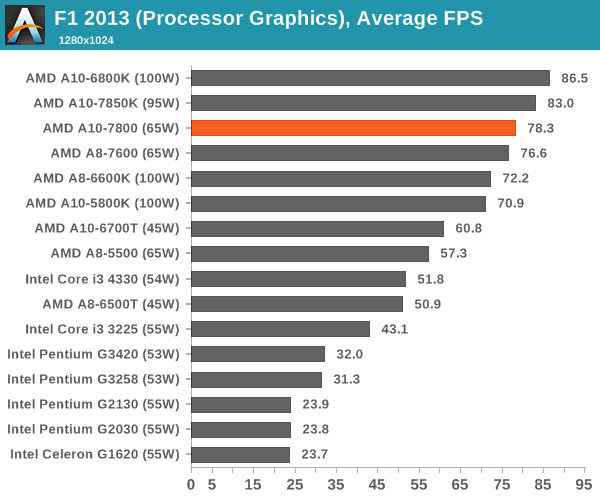
Bioshock Infinite
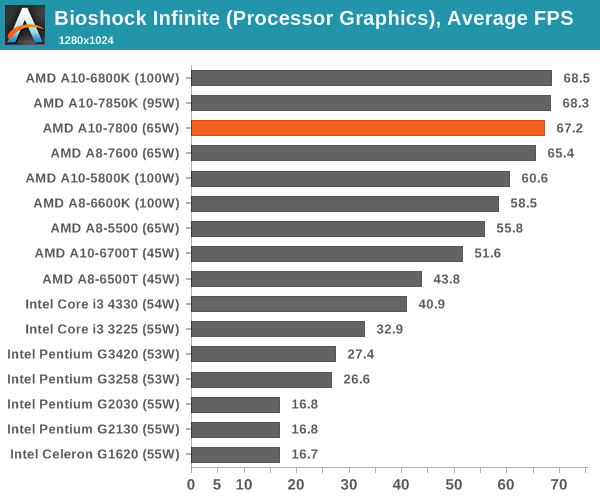
Tomb Raider
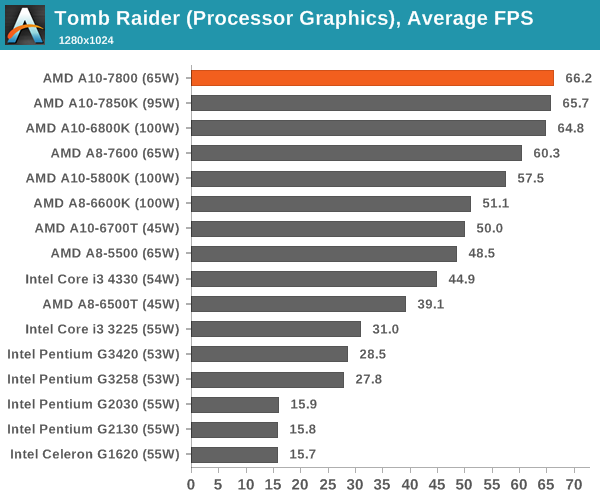
Sleeping Dogs
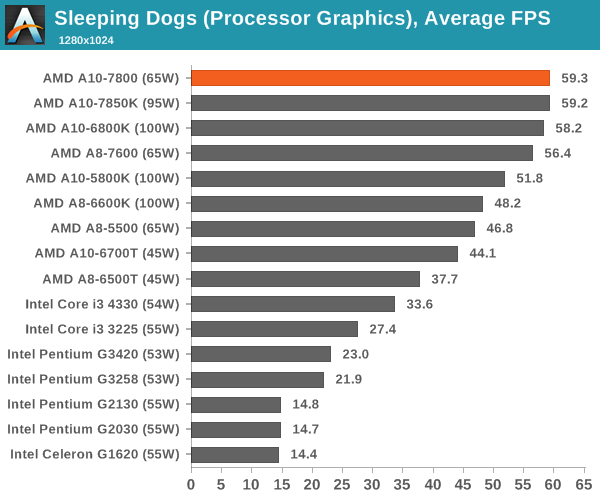
Company of Heroes 2

CompuBench 1.5
CompuBench is a new addition to our CPU benchmark suite, and as such we have only tested it on the following processors. The software uses OpenCL commands to process parallel information for a range of tests, and we use the flow management and particle simulation benchmarks here.
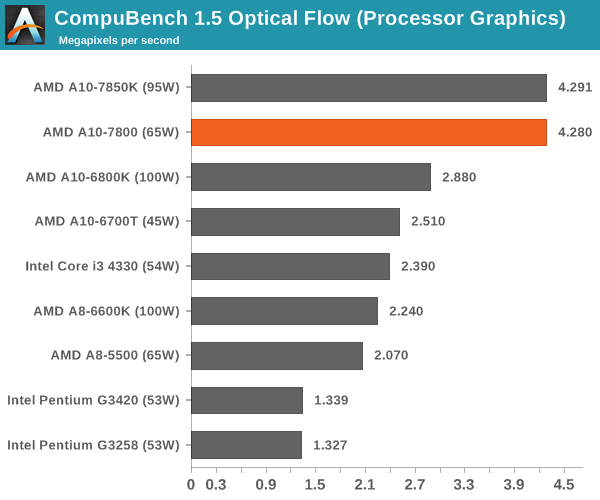
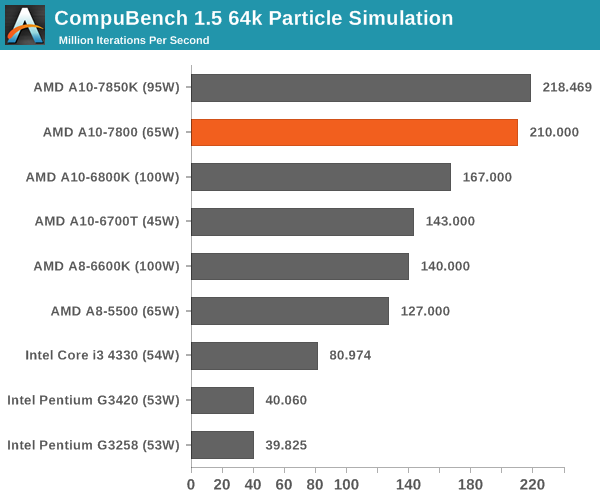
3DMark Fire Strike
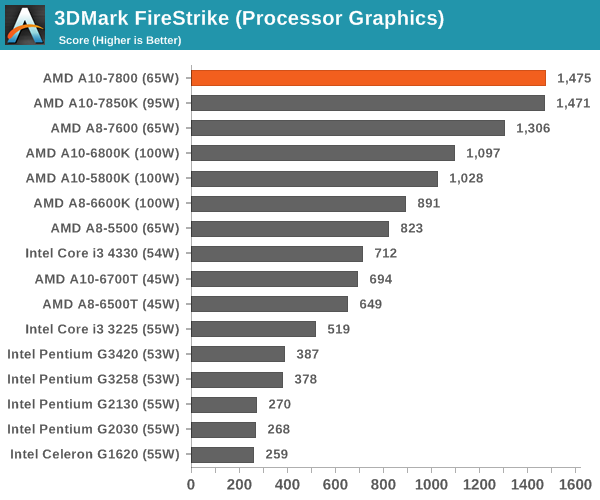
The simple answer is this: for anything related to processor graphics, AMD's Kaveri wins hands down and by a large margin in the same power envelope for cheaper.






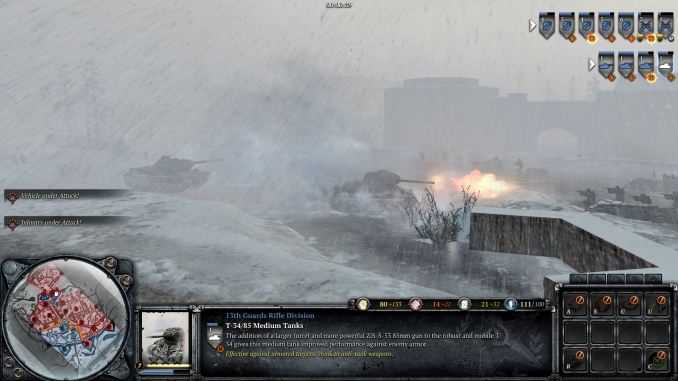








147 Comments
View All Comments
vision33r - Monday, August 4, 2014 - link
This APU seems like 6-7 yrs late. I don't think it's competitive at all and even Intel's newly released SOC meant for mobile will catch and beat AMD APU in less than 2 years. They need to get their chip design competitive fast or soon ARM SOCs will take over the low price desktop market. I think Chromebooks are already outselling AMD notebooks.rooh - Tuesday, August 5, 2014 - link
Good review. I'll buy a laptop with that APU or any with quad-core @2.5GHz or higherSince they play good 1280 * 1024 with lot of total pixels compared to 1366 * 768
They are way 2 good for games at 1366 * 768 resolution as most laptop with them are at that resolution.
2 months from now I will grab mine
Wowhw - Tuesday, August 5, 2014 - link
Most of You need to move to an area where electricity costs 0/per kWh.Seriously. Compaling over TDP was fun maybe a couple of years ago, now it's just old. Want low TDP? Get an ARM based laptop like the chromebook.
briansmccrary - Tuesday, August 5, 2014 - link
goodPhartindust - Wednesday, August 6, 2014 - link
Glad to see AMD working on getting TDP down, and it appears it didn't cost them much in performance to cut it by almost third. Perhaps there is something to be said for allowing a node/arch to mature instead racing to the next?Nepos480 - Saturday, August 9, 2014 - link
Lots of people here saying there is no sense behind the AMD solution and there is. Clearly. The only problem is that its really niche. My dilemma: I want a quiet HTPC. I need it to be cool running as well because it will be on most of the time as my file server. It needs to be cheap. It also needs to be flexible. My original solution was a celeron g530 (stock cooler), Radeon 5450 (passive), 4GB RAM, and a ton of HHDs. Case was roughly 3U. 2x 120mm fans intake/exhaust. To be honest it wasnt bad. And it was cheap. The whole damned thing. But I quickly lost flexibility. No issues with the CPU. At 2.4 ghz It felt just as snappy as my 2500k in XBMC. But the passive GPU idled at around 122 and coasted at 135. In turn it caused my chipset to heat up. I know these temps dont scare most but I like peace of mind. So I thought about adding a cheap discrete GPU but the smallish enclosure and cheap card would lead to too much fan noise. i could recycle my 260gtx (the T-34 of GPUs) but it killed airflow and barely fit. The final straw was when I decided to emulate PS2 games (gauntlet legends to make sure I head enough overhead) on the home theater. The CPU was ok. but the 5450 wasnt no matter what I tried. Plus is really started to cook. So I tried doing with the Intel HD graphics. The emulation literally played in slow motion to include the music. So I was stuck.So I bought an A4 4000 and a zalman copper cooler (CPNS 7000 I think). Now there is no fan noise. Period. My WD eco greens are louder. Everything runs cooler and airflow is awesome (still angry the copper HS isnt really copper though). The CPU @ 3.2ghz is about equal to the celeron @2.4 ghz (sad really) but the 7480d smokes all my other solutions. So now I have everything I wanted (cheap, cool, quiet).
These AMD CPUs expand possibilities. Not saying I am a fanboi either (i5 4670, i5 2500k, E8400, G530, i3 ULV in a notebook). But this one AMD APU saved my bacon. About $130 or so for APU, Mobo and Zalman cooler.
HiTechObsessed - Monday, August 11, 2014 - link
APUs are still nowhere near viable for their price/performance.For the same price as the A10-7800, you can buy a 750k Athlon or Pentium G3258 and pair it with a 7750 (or similar) for FAR superior gaming performance. The gap in price/performance only widens if you compare to the 7850k.
Tl;dr APUs are pointless still.